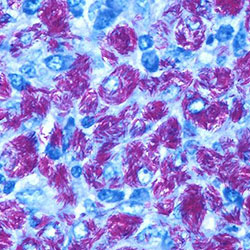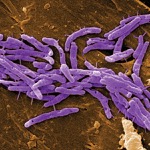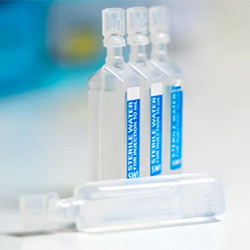By IDSE News Staff
High levels of some minerals and metals in environmental water supplies may increase the risk for nontuberculous mycobacteria (NTM) pulmonary infections in people with cystic fibrosis (CF), according to a new study from the National Institute of Allergy and Infectious Diseases.

Researchers found that the presence of the metals molybdenum and vanadium along with sulfate—a collection of mineral salts—in the U.S. municipal water system was associated with an increased incidence of NTM pulmonary infections, the leading cause of drinking water?associated illnesses (Environ Epidemiol 2023;7[5]:e266).
Previous studies showed that certain environmental conditions, including the presence of trace metals, likely contribute to a higher abundance of NTM in the water. Two of the most common forms of NTM bacteria in the United States are Mycobacterium avium complex (MAC) and Mycobacterium abscessus. Both are linked to chronic lung infections in people with CF and other lung diseases. More than 35,000 people in this country have CF, which causes the body to produce thick mucus, resulting in lung damage and trapping bacteria, thus increasing the likelihood of lung infection. This study examined whether the concentration of metals and minerals in the water had any influence on the probability of MAC and M. abscessus infection in people with CF.
The case-control, population-based study included Cystic Fibrosis Foundation Patient Registry data from 3,897 people with CF living in states that had trace metal water data available in at least 50% of counties: Arizona, California, Colorado, Connecticut, Maine, Massachusetts, Nevada, New Mexico, Rhode Island, Utah and Wyoming. The study revealed that 484 people had MAC and 222 had M. abscessus. The presence of sulfate and vanadium was positively associated with MAC, and the presence of molybdenum was positively associated with M. abscessus.
“In multivariable models, we found that for every 1 standardized unit increase in the log concentration of sulfate and vanadium in surface water at the county level, the odds of infection increased by 39% and 21%, respectively, among persons with cystic fibrosis with MAC compared with cystic fibrosis NTM-negative controls. When modeling M. abscessus as the dependent variable, every 1 standardized unit increase in the log concentration of molybdenum increased the odds of infection by 36%,” the researchers wrote.
Researchers said the study sheds light on how water quality elements may increase the risk for bacteria-related pulmonary infections, but more studies are needed to establish a causal relationship between those conditions.




